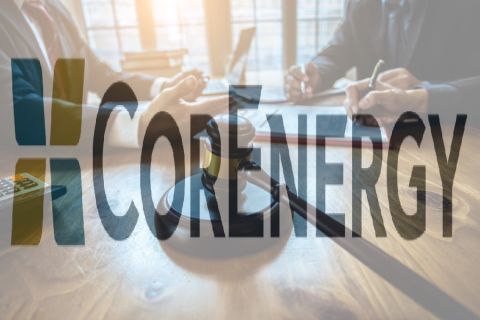Jordan Blum, editorial director, Hart Energy: I'm Jordan Blum, editorial director for Hart Energy. We're here at the SUPER DUG Conference in Fort Worth. We're almost wrapping up. It's the last day. I'm joined by James Hall of Nabors Industries. He's the senior director for energy transition solutions. We're talking about efforts to cut emissions in the oil patch and to get ahead of upcoming EPA regulations too. Can you talk about what Nabors is doing with electrification in the oil patch and addressing issues with the fleets?
James Hall, senior director, energy transition solutions, Nabors Industries: Sure. Yeah. So, we've really focused on how can we continue to drill wells, but do so in a sustainable way. So, how can we reduce the emissions with respect to the actual drilling activity, not the well as our focus, but the powering of that rig. So, electrification is a huge push, but not just electrification, but also when we can't electrify, and when we mean electrify, we mean bringing in power from another source, so the grid. How can we do so [sustainably]? So, a number of different technologies where we can improve the burn of diesel if we have to, as well as, as we say, moving to a completely sustainable power source from outside.
JB: I think you said about 20% of the fleet will be electrified by the end of the year?
JH: Yeah, it's what we're pushing for. We're pushing to move more and more units out into the field. We're currently around 20 units in the field, which is our PowerTAP product, which is the transformer for connecting to the grid.
JB: And are operators increasingly becoming more eager to address these solutions, new technologies?
JH: Yeah, definitely. I mean, with a focus on cost mindset as well as emissions. So, obviously our technologies are designed to be in the benefit from both a cost perspective as well as an ESG emission saving. But we're seeing a big drive when I talk about that 20 units that we have from a electrification, that's in the past 16 months. So, this is a very recent push and we don't see the end in sight. This is continuing to grow.
JB: And there's, like you said, that push, there's more of a push and pull effort for continuous monitoring of methane at the well sites, at the drilling sites. Can you elaborate a bit on just how important that is what you all are doing as well?
JH: Sure. So, we obviously focus on the drilling side, but if we can instrument the rig that can help identify the emissions from the drilling, we are also able to, at that same period of time, monitor all well side emissions. So, we're looking at technologies that we can add to not just the engines, but if we focus on an engine. If a rig is still running an engine, we have technologies where we can instrument and do full real-time monitoring through our rig cloud platform. And then after the rig moves to an electrification pad, those instrumentations can be used to match the whole area-based emissions, not just the engines.
JB: Very good. And Nabors obviously is a global company as well. Can you talk about what Nabors is doing, what and where Nabors is doing to address these issues outside of the U.S. as well?
JH: Yeah, so maybe let's focus on areas where we don't have the grid. So, in countries with more remote locations, power from a utility is not so readily available. In those countries, we're seeing a very large increase in the utilization of our nanO2 product, which is our diesel enhancing product. So, that reduces your fuel consumption and emissions when still burning diesel. In areas around the world where we see electrification, LatAm [Latin America] is a great point for that. Where utility is there, it's at the right rig sites already. We're seeing a big growth of the PowerTAP and the highline product.
JB: Very good. Well, thank you so much for taking the time and joining us here at SUPER DUG in Fort Worth. For more information, please read and watch online at hartenergy.com.
Recommended Reading
CorEnergy Infrastructure to Reorganize in Pre-packaged Bankruptcy
2024-02-26 - CorEnergy, coming off a January sale of its MoGas and Omega pipeline and gathering systems, filed for bankruptcy protect after reaching an agreement with most of its debtors.
Magnolia Oil & Gas Hikes Quarterly Cash Dividend by 13%
2024-02-05 - Magnolia’s dividend will rise 13% to $0.13 per share, the company said.
BP’s Kate Thomson Promoted to CFO, Joins Board
2024-02-05 - Before becoming BP’s interim CFO in September 2023, Kate Thomson served as senior vice president of finance for production and operations.
NOV's AI, Edge Offerings Find Traction—Despite Crowded Field
2024-02-02 - NOV’s CEO Clay Williams is bullish on the company’s digital future, highlighting value-driven adoption of tech by customers.
Greenbacker Names New CFO, Adds Heads of Infrastructure, Capital Markets
2024-02-02 - Christopher Smith will serve as Greenbacker’s new CFO, and the power and renewable energy asset manager also added positions to head its infrastructure and capital markets efforts.





